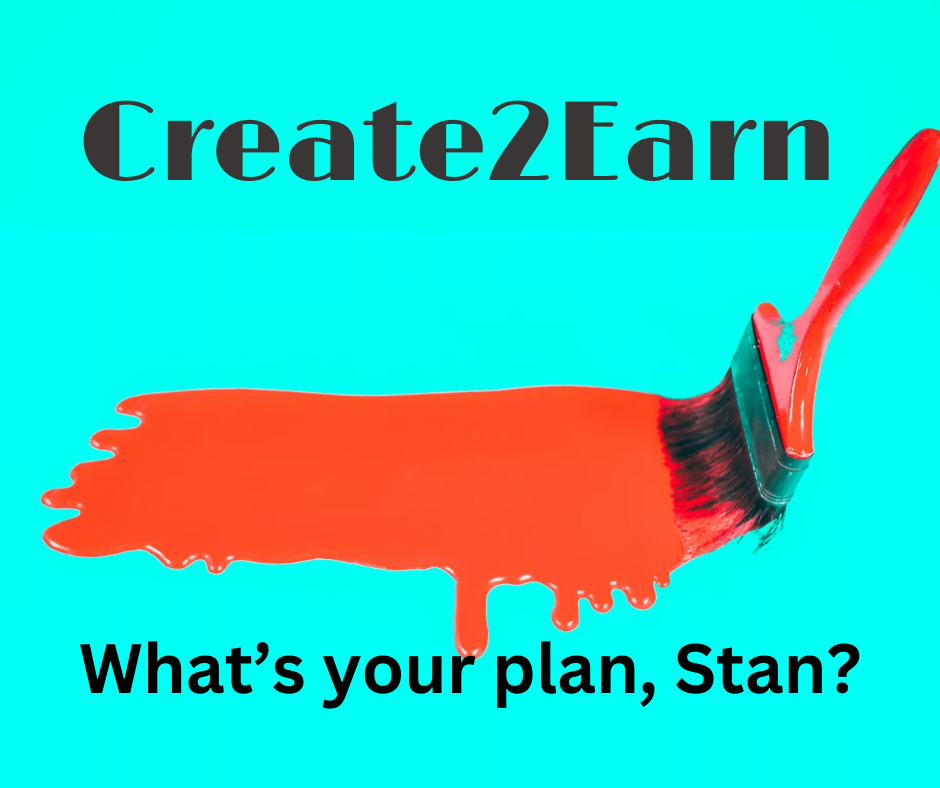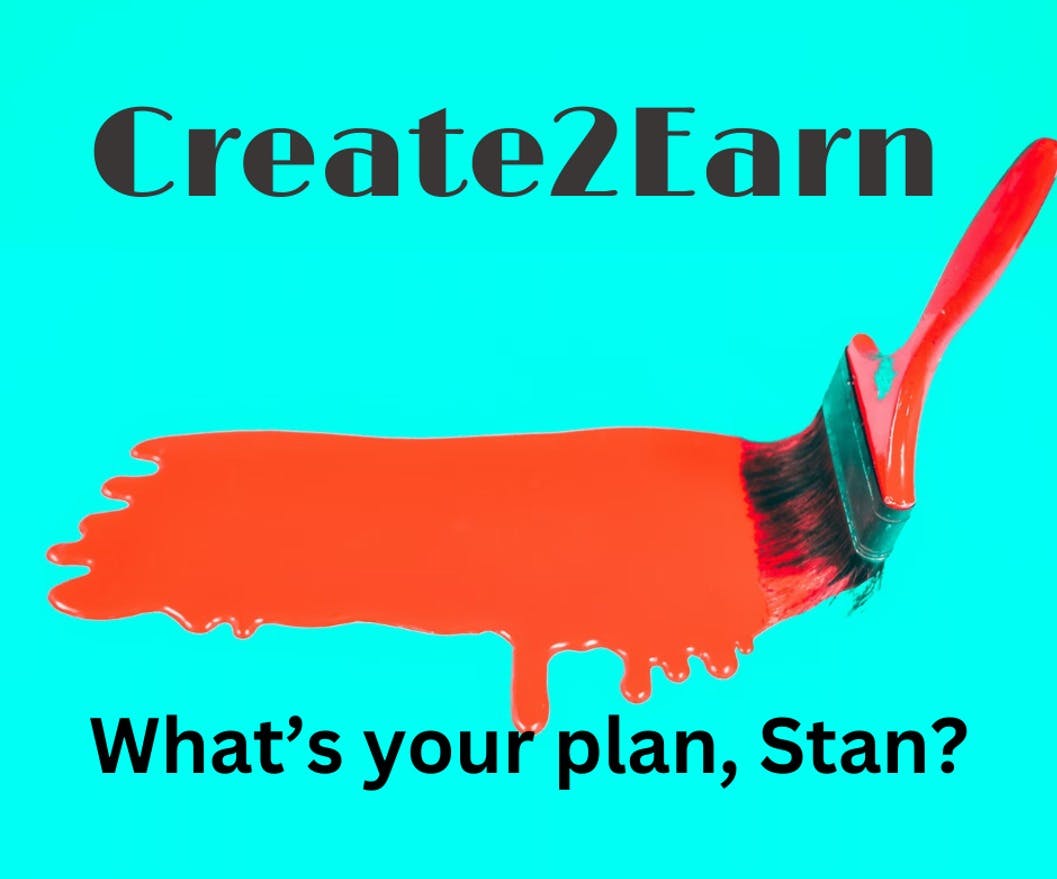Collect this post and receive 500 Taylor tokens.
After taking a month off to reflect on the future direction of my writing business, I've had time to think about current Create2Earn models for writers. There are three primary models crypto-based social media platforms use that give writers greater earning opportunities. Today, I'll explore the ins and outs of these Create2Earn models and discuss which one (if any) I think holds the greater promise.

The three primary Create2Earn models I'll discuss today are:
Tipping - Tipping models allow creators and curators to earn simply by receiving tips for their creative output. This occurs in one of two ways. The first, and most obvious, way is through wallet-to-wallet transactions. The second way is more akin to the rewards model but empowers readers with tools that govern their ability to "tip" a creator using blockchain technology similar to rewards-based systems.
Rewards - Creators can earn rewards on a variety of blockchain-based social media platforms simply by creating content that others either upvote or downvote. The rewards are generated when users interact with each other on the platform.
Non-fungible Tokens (NFTs) - NFT-based Create2Earn models give creators the ability to create content that others purchase with the added benefit of a secondary market. While tipping and rewards-based models are more passive for curators and readers, the NFT model is more active. Creators do not earn rewards unless they make a sale, but they also have the ability to earn additional rewards when their creations are resold.
The Pros and Cons of the 3 Create2Earn Models
Each of the three Create2Earn models have their benefits and drawbacks. Let's look at the benefits and drawbacks for each model.
The Pros and Cons of Tipping Models
Tipping Create2Earn models come in two varieties. Each variety has its own set of benefits and downsides. First, let's look at the wallet-to-wallet model.
Wallet-to-wallet tipping - The wallet-to-wallet tipping model allows fans to tip creators when they create something of value. gFam and Zion are two platforms that use this model. gFam empowers users to tip each other with XRP while Zion utilizes The Lightning Network to facilitate bitcoin tipping. One obvious benefit to this Create2Earn model is that fans can tip creators any amount based on the value they feel they've received. Theoretically, a creator could earn more than is possible with a rewards-based system. On the other hand, fans are not incentivized to leave tips, which means tipping is rare because fans have to give something up to reward creators. When tips do occur, however, it can be much more encouraging for the creator knowing the fan truly appreciates her creations.
Transactional tipping - Transactional tipping is when a fan tips a creator by taking a particular action on a blockchain thereby creating the "tip" in the process. This Create2Earn model is used by Publish0x, but it acts more like a rewards system, which I'll discuss below. The "tipper" takes an action that allows them to "tip" the content creator. In Publish0x's case, both the tipper and the tippee are rewarded with a random cryptocurrency (either ETH or a circulating list of altcoins), but the tipper gets to choose how much of the earned tip goes to the creator and how much goes back to the tipper (the default is a 80/20 percent split). One benefit to this model is that tipper's have an incentive to leave a tip since they'll also receive a portion of the tip for doing so. The downside is that tippers may tip a piece of content insincerely because they'll also receive a reward for doing so. Publish0x mitigates this downside by limiting the number of tips an individual can leave for every 24-hour period.
Tipping is the least popular form of Create2Earn model, but it has its use cases. I've had some pretty decent tips on gFam, and Publish0x has been a fairly consistent earner for me personally.
The Pros and Cons of Rewards-Based Models
Several prominent crypto-based social media platforms use the rewards model for content creators. Hive, Minds, and Odysee are three platforms that use this model.
Rewards-based systems can be transactional or time-bound. For instance, the transactional model has fans and curators taking some action to generate a reward for both the creator and the curator. The time-bound model generates rewards based on time spent interacting with the content. Other models may be prominent, but these are the two most popular rewards-based Create2Earn models.
The biggest benefit to rewards-based Create2Earn models is that fans and curators are incentivized to upvote or view creator content because they'll receive a portion of rewards. However, this may occur insincerely or, in the case of Hive, automatically through curation trails, which lowers user engagement. On the other hand, since comments can also be upvoted an earn rewards, engagement is also encouraged.
My experience with Hive informs me that rewards-based Create2Earn models can be lucrative as long as creators are consistent with their posting schedule and good at promoting themselves. Creators who manage to attract a following with consistent great content stand the chance to earn more while inconsistent posters and those who are not good at promoting themselves will earn less. This reality incentivizes creators to improve their content in various ways. Hive also has community-based tools that discourages spam.
One of the downsides to rewards-based systems is that rewards may be too small for the output. If a platform is not very popular, there won't be that many people available to help generate rewards.
The Pros and Cons of NFT-based Models
NFTs create a unique proposition for creators and fans alike. For creators, NFTs can provide a steady source of income based on the perceived value of the content created. For instance, a creator can control how much he earns by creating scarcity while increasing value and output. By limiting the number of NFTs available, a creator can ensure that fans who are interested in his work have a reasonable expectation that creations will hold value for longer. That incentivizes fans to purchase the creator's work. On the other hand, a creator that isn't good at selling his work may not find any buyers.
The upside to the NFT model is that a creator who is good at selling his work can potentially earn more in the long run than with either of the other two models. The downside is that creators must improve their sales skills if they want to increase their earnings.
A creator who is good at marketing his creations can potentially earn more than other creators just by learning how to market and sell his creations even if those creations are not as good as the creations of other creators. That makes sales ability a primary skill, equal with the skill of creativity.
Another upside for creators is the ability to receive passive income through sales on a secondary market. Fans who purchase creator work can resell that work and potentially profit from those sales while the original creator can earn a royalty on the resell. As a creator's fanbase grows, his income, both active and passive, should grow with it.
Paragraph and Mirror are examples of this Create2Earn model.
Collect this post and receive 500 free Taylor tokens.
Which Create2Earn Model is The Best?
Now, to answer the question asked at the beginning of this post: Which Create2Earn model is best?
Answer: It depends.
Creators must analyze their own skills and values to determine whether tipping, rewards, or NFTs are the best and most lucrative Create2Earn model for them. For some creators, the ability to sell NFTs and watch their income grow may be the most attractive model. For others, watching their rewards grow over time as they attract more fans might be more lucrative. I suspect, though, that most creators in the future will utilize a combination of these three Create2Earn models and create multiple streams of income on multiple blockchains. I know that is my preferred approach and I look forward to pursuing my income goals using these Create2Earn models moving forward.
If you liked this post and haven't subscribed to me yet, you can subscribe and be the first to read every post.
To learn more about Create2Earn models on Web3 social media platforms, be sure to check out my book Web3 Social: How Creators Are Changing the World Wide Web (And You Can Too!).



